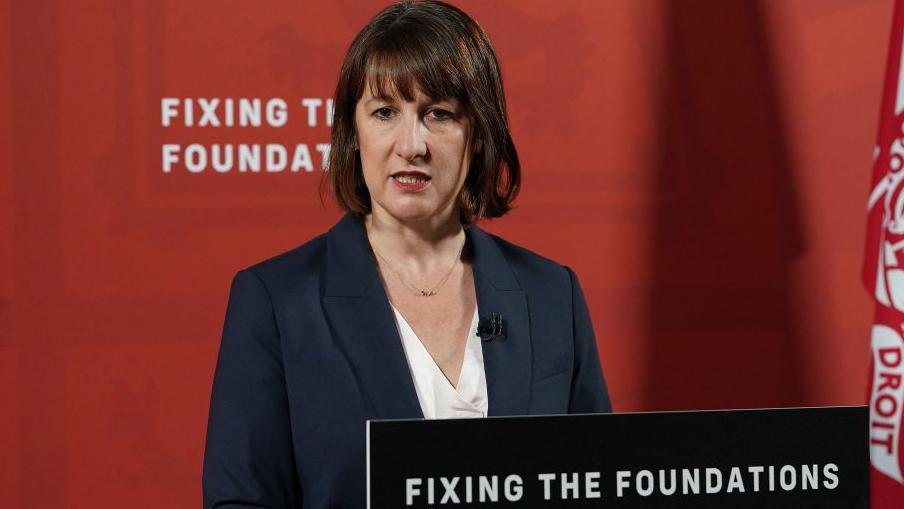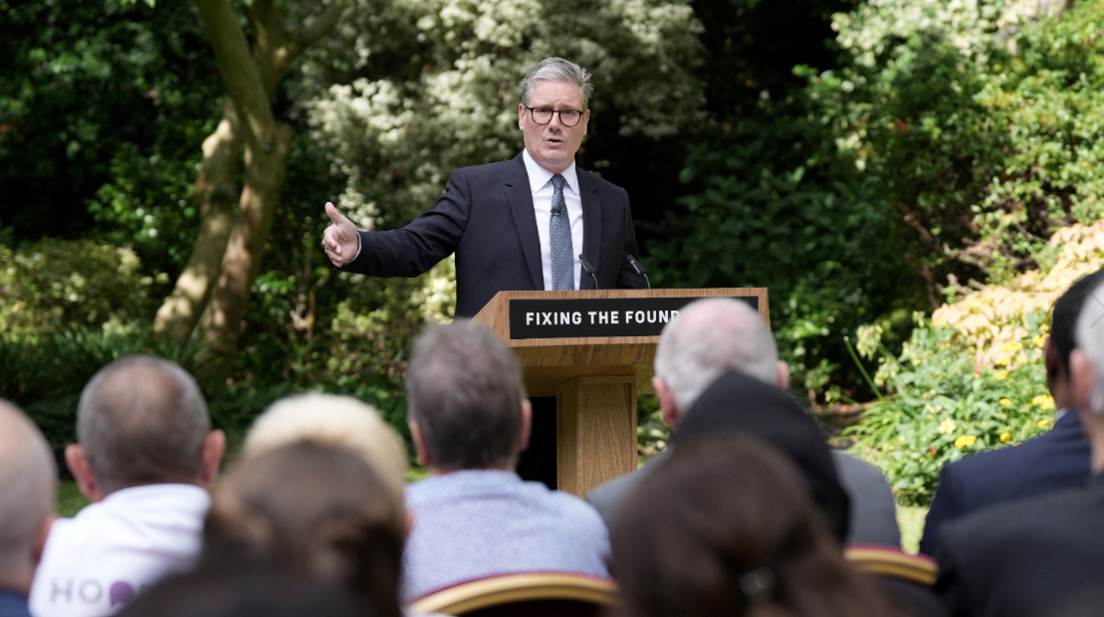Scotland's fiscal outlook messy and 'painful'

- Published
At Holyrood and Westminster, budgets are looking messy and, in the prime minister's word, "painful".
To understand what is going on, it helps to separate the problems during this financial year, running up to April 2025, and the years that follow.
It also helps to distinguish between pressures already building up, principally from public sector pay, and those that lie ahead this autumn. And as ever, Holyrood and Westminster are working to different electoral cycles and agendas.
If we look at the in-year problems so far, the Scottish Fiscal Commission has published an update on the public finances at Holyrood, placing the blame on Scottish ministers.
Grim spending forecast suggests stormy times ahead
- Published27 August 2024
What taxes might be raised in the Budget?
- Published24 October 2024
That includes the decision, bounced on ministers by Humza Yousaf when he was first minister, to freeze council tax and compensate councils for the loss of income.
It includes the rising cost of Holyrood's relative generosity with welfare benefits. Last year, it spent £5.3bn, which was £900m more than the Department of Work and Pensions would have spent in Scotland.
This year, they'll cost £1.1bn more than Scots would receive under Westminster's welfare allowances, and within five years, that will have risen to £1.5bn - all of that taken from other spending priorities.
Figures also published on Tuesday show the Scottish Children's Payment, with no parallel elsewhere in the UK, had £25 weekly payments going out to support 325,550 young people in June.
It is acknowledged as an effective way of tackling child poverty, but struggling public services would also like to have that money.
Worker leverage
Above all, the Fiscal Commission identified an unrealistically low excpecation of public sector pay increases built in to the budgets last winter.
It also pointed out that this happened last year. In May, 3.5% had been budgeted for increasing public sector pay. By December, the reality was 6.5%.
For the current year, Shona Robison, the finance secretary, assumed 3%.
The average deal already is well ahead of that, and neither teachers, nurses nor junior doctors will want to do any worse than the hikes to pay south of the border.
At more than £25bn, the pay bill for devolved public services including councils is more than half of day-to-day spending. A small percentage makes a big difference in pounds.

Scotland's Finance Secretary Shona Robison budgeted for a 3% public sector pay rise
Unless there are one-off payments, each year builds incrementally on the last. And they build faster in Scotland, where median public sector pay is £39,100, some £1,400 more than the UK figure, while the percentage of public sector employment in Scotland is nearly 23% compared with nearly 18% elsewhere.
The minister probably assumed that falling price inflation would run in parallel with falling wage inflation. But public sector unions had some catch-up to do on the past two years of falling real pay, and they can make a case that recruitment and retention problems need at least some financial response.
They are given more leverage in catching up if ministers at both Holyrood and Westminster will do whatever it takes to avoid strikes.
Digitally excluded
There is also the structural problem that the budget for pay sends a strong signal to workers' negotiators. Had Shona Robison put a more realistic 4 to 5% into her budget, that's what unions would have aimed at.
The 3% limit was a statement of intent, at least until the pay bill broke through it, requiring the Scottish government - in the absence of substantial borrowing powers - to cut elsewhere.
That process has begun already - a recruitment freeze, axing the external communications budget, funds for councils to spend on nature restoration, flood prevention and electronic tablets for the "digitally excluded".
Next week, Shona Robison moves on from these capital spending funds to the day-to-day budgets, and they could hurt more.
But taking the longer view, Prof Graeme Roy, the former Scottish government civil servant who chairs the Fiscal Commission, is calling for a more strategic approach to public sector employment and pay, allowing for better planning and more transparency.

The Chancellor Rachel Reeves said earlier this year she had inherited a £22bn hole in this year's budget
So far, it looks like choices made by Scottish ministers that have caused their problems with in-year spending,. The Fiscal Commission points out these build over time, and each year these cumulative costs further reduce the room for manoeuvre on spending.
Looking ahead to the autumn, Shona Robison is right to say that her problems are coming from decisions at Westminster - some by the Tory government for failing to get a grip on the public finances, and some by the new Labour administration as it seeks to get the difficult stuff out the way early.
What is striking in the Fiscal Commission assessment is how little is known about Rachel Reeves plans.
In July, the Chancellor said there was a £22bn hole in this year's budget, which she partially addressed with measures such as the cut to Winter Fuel Allowance for older people.
Boxed in on tax
But there is more to come. She has said there will be spending cuts and tax increases. But Labour has boxed itself on tax increases, by ruling out increases in the big three: income tax, national insurance and VAT.
If the chancellor has found some money to help pay for public sector pay settlements (unlike Shona Robison, Rachel Reeves can borrow to cover some of this), some of the funds she releases should add to the grant flowing to the Scottish government.
But those settlements are not being fully funded. Cuts will be required as well, and how that feeds through the funding formula is far from clear.
The Fiscal Commission offers some more positive news about tax revenue, following a rise in income across the economy. It seems Scottish pay has been rising faster than UK pay, perhaps because of greater labour and skill shortages. More income means more income tax revenue.
But that significant advantage to Scottish tax collection has gone, as Scottish average earnings growth has fallen back into line with the rest of the UK.
The other good news is that this uncertainty should be reduced under Labour plans. Rachel Reeves' budget on 30 October will give figures for two years, and next spring, she intends to set out three-year plans.
Related topics
- Published27 August 2024

- Published27 August 2024

- Published27 July 2024
